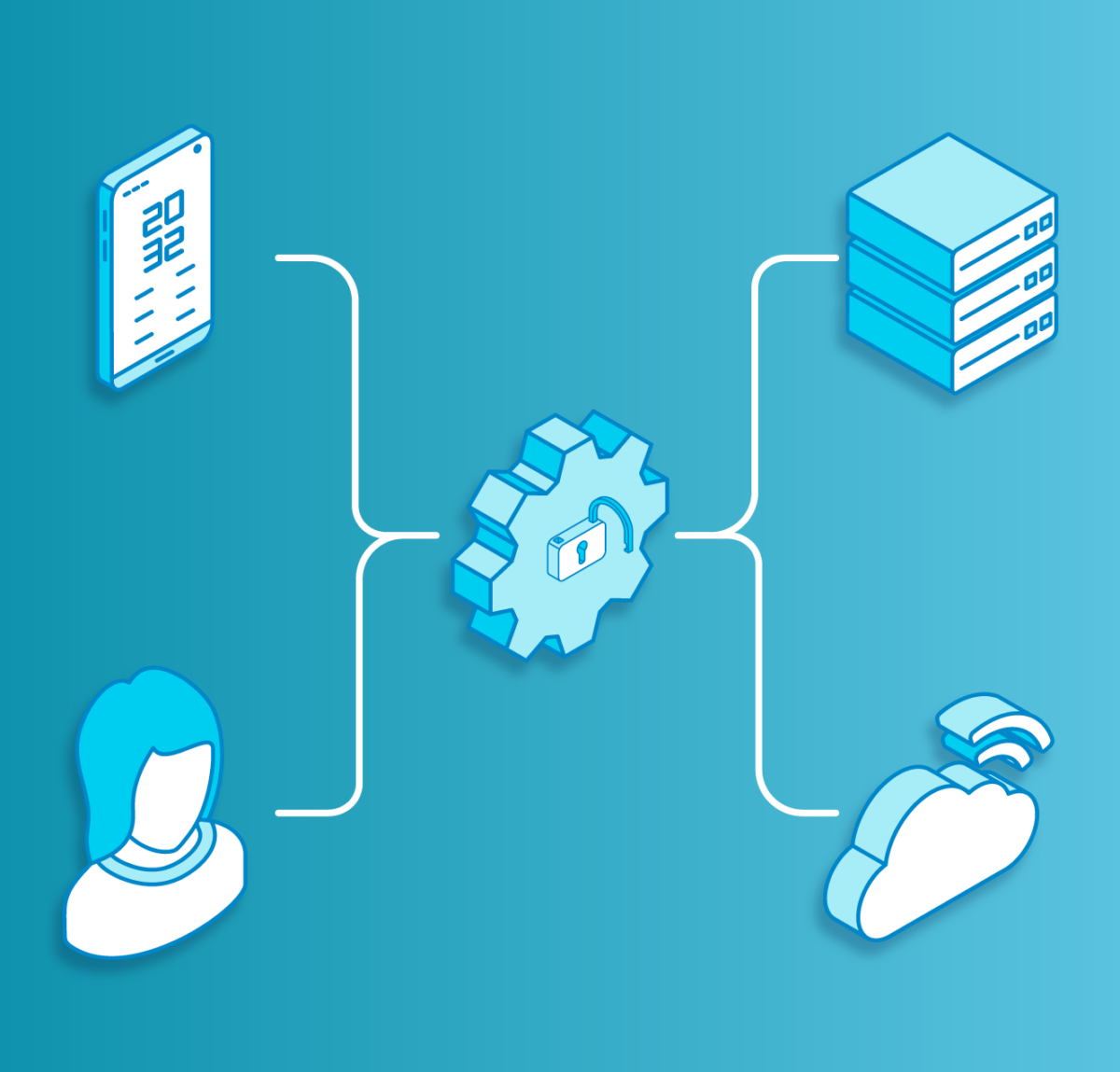How to Leverage the Principle of Least Privilege for Stronger Network Security

The principle of least privilege (PoLP) is an information security concept that gives applications or users minimum required network permissions to perform their jobs. Therefore, PoLP is an important aspect of privilege access management (PAM).
Implementing the principle of least privilege provides network security by avoiding needless exposure. For example, a user and employee access limit reduces the risks of cybercriminals getting hold of critical files.
Having easy access to the most critical assets of an organization is vitally important. The only users with full access should be the current administrator or the executives in the company. For newly hired personnel within the organization, the lowest permission levels should be implemented at the onset. Full permissions should be granted after screening and a background check. Bear in mind that background checks are always cheaper than data breaches.
Why is PoLP Important?
Putting the least privilege in place goes beyond having a single or limited number of admins for internal operations. Subsequently, many organizations give users over-privileged access to information that has nothing to do with them. The bitter truth is that half of the users share their credentials with someone else.
Cyber threats occur inside or outside, and both attackers operate alike. Criminals from outside leverage user account to gain control over endpoints and to acquire targeted access to valuable data. Insiders leverage the access they have or any compromised accounts. With that, they can leverage data and applications for malicious activities.
The principle of least privilege ensures that access to critical assets and high-value data gets protected. It applies to not only just users, but also to applications, connected devices, and systems that require access as well.
The principle of least privilege allows the minimum amount of access necessary for employees to complete their job without restriction. It gives a form of balance, keeps systems safe, and facilitates productivity.
There primary goals of least privilege include:
- To bring a balance between usability and security protections.
- To implement a minimum access policy for managing and securing privileged credentials.
- Flexible controls are needed to balance compliance requirements with cybersecurity, end-user experience, and operational functions.
- Users only need access to the minimum amount of required privileges.
- There’s a need to give users a frictionless experience while keeping the system highly secure.
Key Benefits of Least Privilege
Reducing the Potential for Insider Threats
Cyber actors on the inside use access to get all accessible data for exfiltration or destruction. In order to successfully prevent an insider threat, use a comprehensive security policy that contains procedures to prevent and detect misuse. There should also be guidelines for conducting misuse investigations and potential consequences and restricting employee access to critical infrastructure. There should have a place for locking up sensitive information and isolating high-value systems requiring tight verification access. If necessary, biometric authentication can be used to prevent employees from using another staff key card.
Reducing the Attack Surface
An attack surface refers to all possible points where unauthorized users could gain access to a system and extract data. Organizations with already over-privileged users need to implement the least privilege principle to eliminate unnecessary access. A smaller attack surface is easier to protect. One way to go about it is by determining user roles and privilege levels, to help understand the particular behaviors of users and employees.
Limiting Malware Propagation or Infection
The principle of least privilege prevents malware from spreading on a network. Malware often requires local administrator rights to gain access. Meanwhile, an administrator with access to various network resources has the potential to spread malware to others.
Having fewer users with elevated rights helps in reducing malware infections. In the event of any attack, it becomes easier to contain, thereby preventing the spread to the entire system. In addition, PoLP reduces users’ ability to install or download unauthorized applications, which can often include malware.
Increased System Stability
Organizations often have to deal with human errors from within the work environment. For instance, an employee could mistakenly tamper with a file and cause major organizational issues . The principle of least privilege is a great way to prevent high-impact human error and thus guarantee greater network and system stability.
Applications running with restricted privileges are less likely to crash the entire system. PoLP also helps limit the downtime associated with a crash or data breach. As a result, an organization practicing PoLP enjoys more stability, enhanced fault tolerance, and improved work productivity.
Challenges with PoLP
Implementing the PoLP comes with numerous benefits, though certain roadblocks can impede its full success. These might include:
Diverse and Complicated Networks
The least privilege comes with the need to centralize accounts to accommodate users and machines. Modern computing environments use numerous complex platforms – both cloud and on-premise. The implication is multiple endpoints for applications and heterogeneous operating systems. As a result, it becomes quite challenging to guarantee the five most important concerns for the security of an organization’s network.
These five concerns include the constant protection of networking equipment, security from computer operating system attacks on , preservation of computer hardware , and maintaining data integrity and confidentiality..
Cloud Computing and Environments
Companies that use cloud environments experience challenges regarding a lack of segmentation, excess privileges, and account sharing due to cloud-native computing. The misconfigurations that stem from cloud permissions often leave an organization vulnerable to potential cybersecurity attacks. Therefore, implementing the principle of least privilege requires strategies beyond a single tool or product.
Default Settings Challenges
Operating systems focus more on ease of use than security. Moreover, the software conditions come with default credentials that are easy to find online. These operating systems shy away from enforcing a minimum access policy as default. The implication is that users have the power to carry out actions like creating backups and deleting files. which can negate the principle of least privilege and expose a network to potential attacks.
How to Implement PoLP
The Implementation of PoLP need not be a complex task. A simple restriction preventing end-users from exfiltrating certain information is a good start. Organizations that want to successfully implement the principle of least privilege can start with the following:
- Conducting privilege audits by reviewing all existing accounts, programs, and processes to ensure there is no loophole.
- Starting or converting all accounts to least privilege to put the necessary checks and balances in place.
- Organizations can also add privileges based on the access required to perform specific tasks.
- Separating privileges requires distinguishing between lower-level privilege accounts and higher-level-privilege accounts.
- Track and trace user or individual employee actions through one-time-use credentials. It goes a long way to avoid potential damage.
Examples of the Principle of Least Privilege
The principle of least privilege has opportunities for every level of a system. It covers applications, databases, end users, networks, systems, processes, and all other facets of an IT environment. Here are some examples of accounts that need PoLP:
- User Accounts: The principle of least privilege only gives users or employees the necessary rights for carrying out their tasks or responsibilities. If the user’s computer gets compromised, it limits the lateral spread of that threat. A major challenge arises when an employee has root access privileges, which can cause
- MySQL Accounts: When several accounts perform unique tasks, a MySQL setup needs to follow the PoLP. When the online setup allows users to sort data, the MySQL account with sorting privileges becomes an issue of compulsion. That way, a hacker who gains access to exploits only gains the power to sort records. However, there comes a big problem if the account has the power to delete records, as the hacker then has the ability to wipe out the entire database.
- Just in Time Accounts: Users who rarely need root privileges should only receive reduced privileges the rest of the time. Organizations must make it a policy only to retrieve passwords from a vault when needed. Using disposable credentials equally goes a long way to guarantee cyber security. It serves as a great way to increase the traceability of a network.
Final Thoughts
Network security best practices call for implementing the principle of least privilege. It serves as an efficient method for ensuring mission-critical data does not fall into the wrong hands. With such high stakes, it is crucial to learn how to properly implement PoLP across your organization’s network.
Try Portnox Cloud for Free Today
Gain access to all of Portnox's powerful zero trust access control free capabilities for 30 days!







